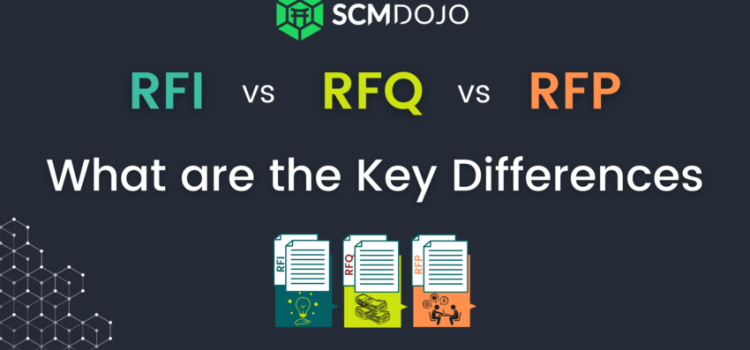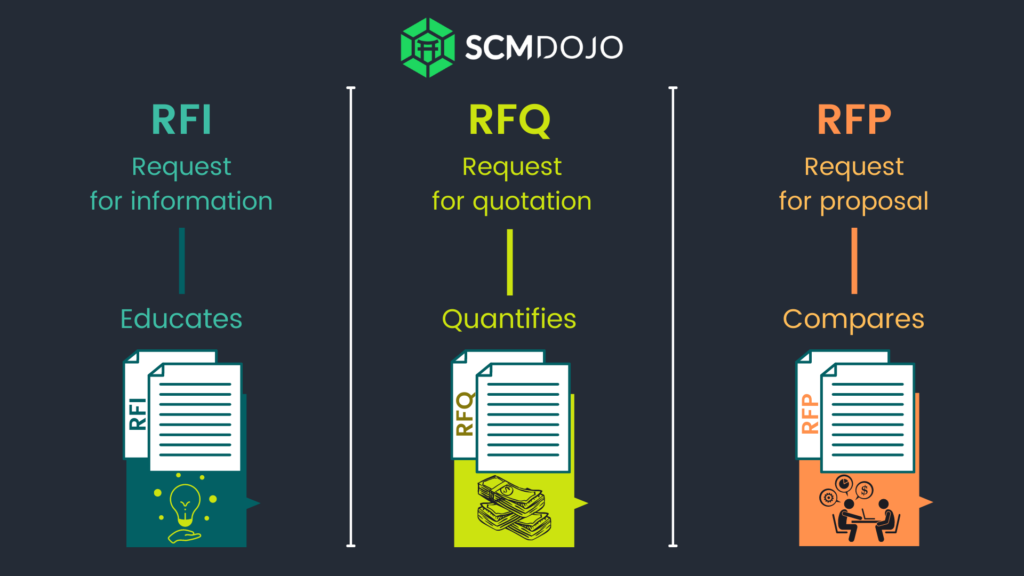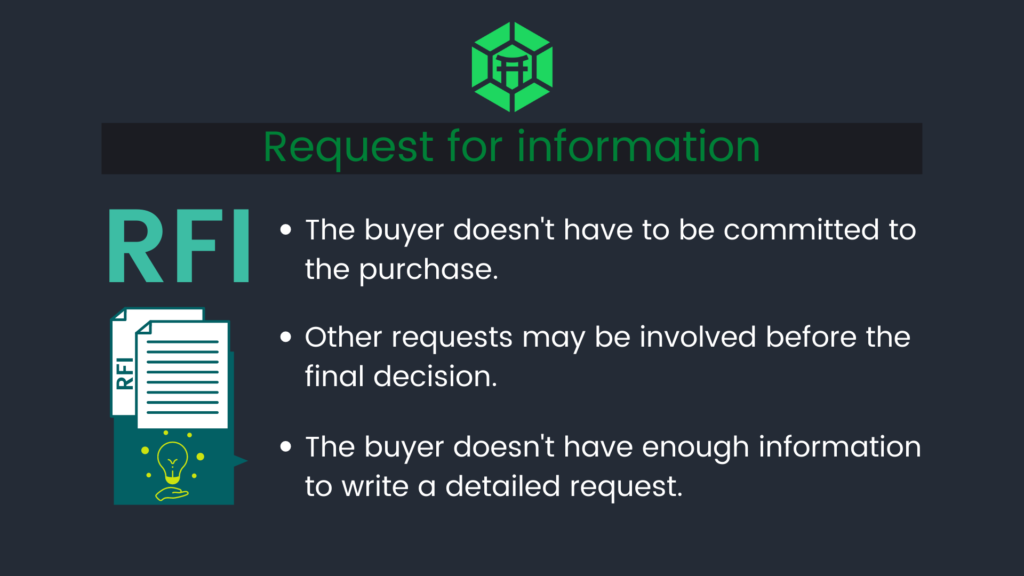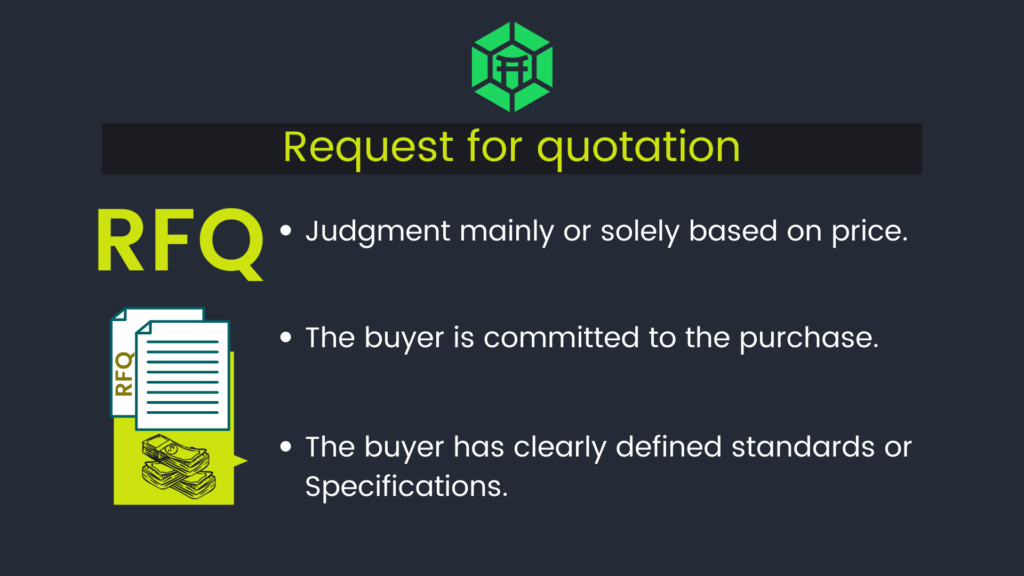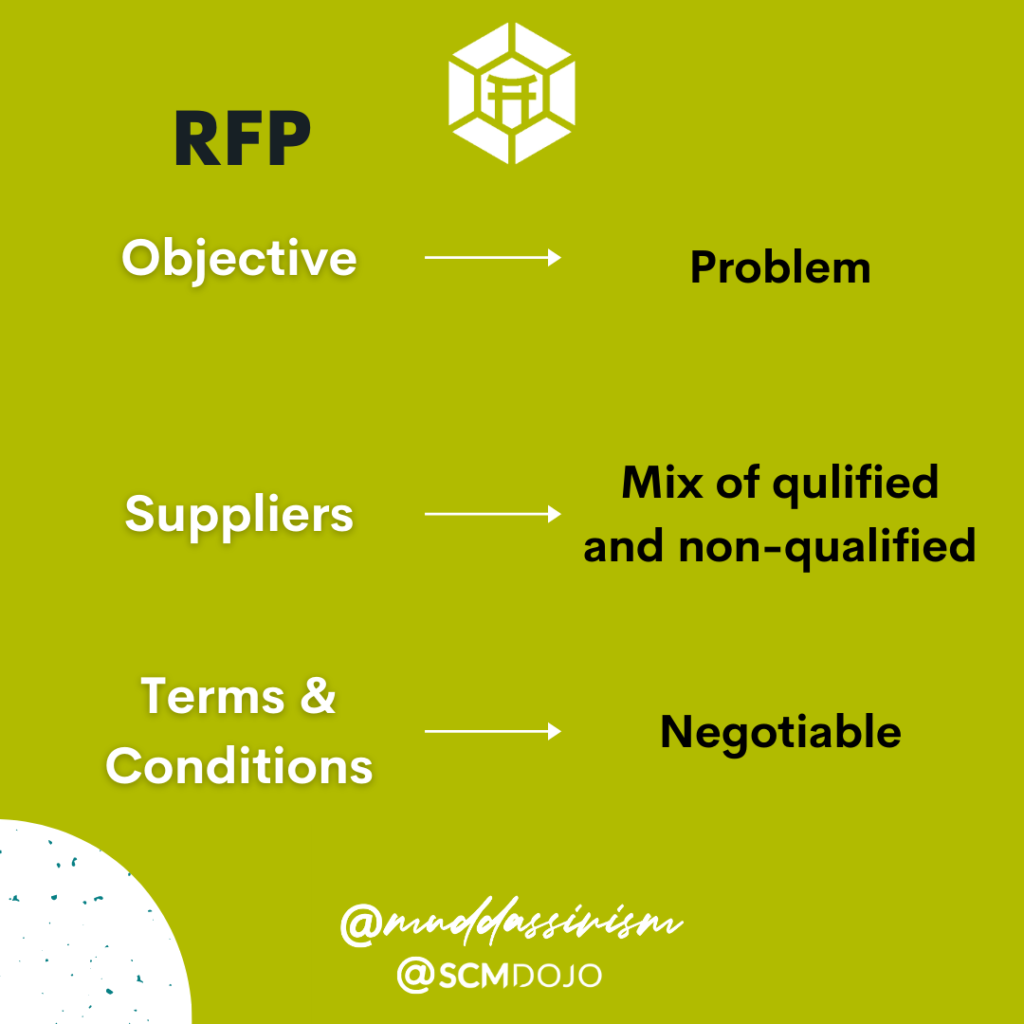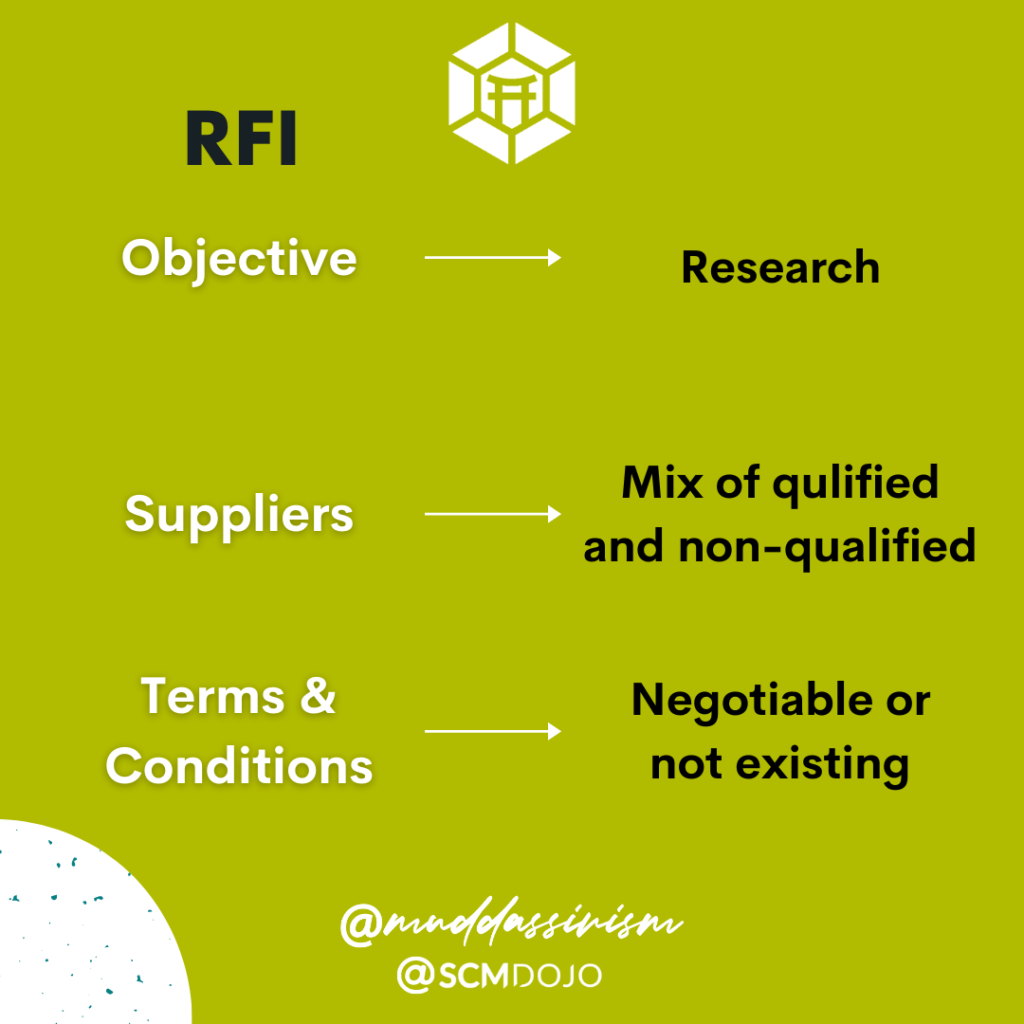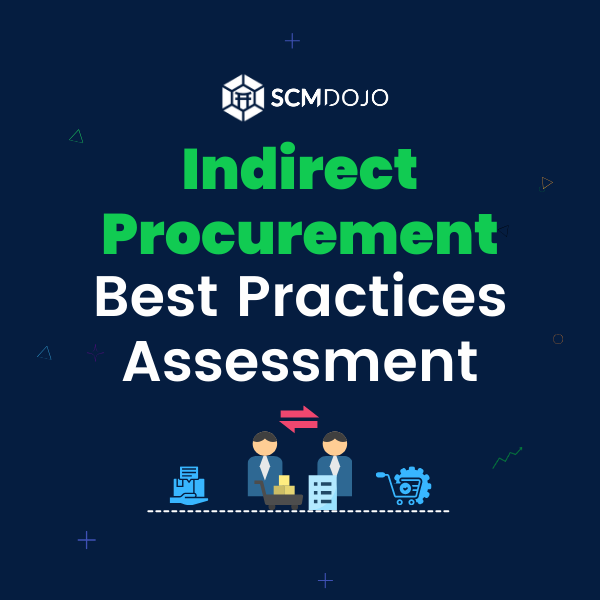Nowadays, enterprises seeking to switch immigration providers have more options than ever before, and often check a large number of traditional and hybrid models in order to find the best model in terms of service, technology, costs, employee experience, etc. At some point you have asked the question RFI Vs RFP? This blog explains this difference very much in detail.
In the procurement process, the following terms are often used: RFP, RFI, and RFQ. Although all these requests seek information about suppliers, they are not interchangeable. Understanding the differences can help companies and organizations determine the type of request that best suits their needs when choosing a new provider.
It is clear that a wise investment in enterprise software can increase the productivity and profitability of its business. However, the complexity of enterprise solutions such as customer relationship management (CRM), supply chain management (SCM), and enterprise resource planning (ERP) require a truly rigorous approach to the software selection process. In fact, Preparing a Request For Proposal (RFP) helps organize software requirements in order to achieve specific business goals and clearly communicate these requirements to the software vendors whose products you are considering.
Through this blog, we will clearly explain and develop as well important details about RFI (Request For Information), RFQ (Request For Quotation) and RFP (Request For Proposal) including their purposes, ask, style, and advantages that simplify these complex but important processes.
Understanding the subtle differences between similar terms in the industry is undoubtedly critical to creating effective processes and procedures. For instance, in many cases, especially in procurement, there are a series of terms and acronyms that have similar meanings but are very different. For example, the processes of RFI, RFP, and RFQ are similar, but they are completely different from each other shown in the image below.
RFI Vs RFP Vs. RFQ – What are the Key Differences?
Difference Between RFI vs RFP vs RFQ
What is RFI or Request for Information:
It is used when we think we know what we want, but we need more information from the supplier. This is the official means of obtaining general information from suppliers. It is also an introduction to supplier management. RFI is able to provide you with a general overview of supplier profiles. According to TechTarget, “An RFI is typically the first and most broadly cast of a series of requests intended to narrow down a list of candidates.”
What is RFP or Request for Proposal:
Commonly used for problems that we detect, this is the most formal one in the “request” process, with strict procurement rules for content, timeline and supplier response. RFP is also a structured way to obtain specific supplier information. It allows you to specify the problem to be solved and invite suppliers to propose solutions. According to Hubspot, the RFPs “give you a sneak peek into different strategies you may not have considered since each vendor will include their own unique action plan along with their bid.”
What is RFQ or Request for Quote:
When we know what we want but we need information about how the supplier meets our requirements and/or how much it costs, we usually use a request for quotation (RFQ). It is a sort of request for price and payment information for highly specific solutions. According to Investopedia, “When the soliciting company knows the exact number or type of product or services it desires, it customarily uses an RFQ. Typically, companies use an RFQ when products and services are standardized, or off-the-shelf”.
Below a graphic that shows the differences :
What does RFI Mean
- Purpose: When you are looking for information, or not sure which solution can solve your problem.
- Asks General issues aimed at education and advocacy.
- Style: Casual, asking for help.
- Advantage: Fast and help inform next steps to meet business needs.
What does RFQ Mean
- Purpose: When you know exactly what you want and why you need to explore all the financial details.
- Asks: Questions about how much it will cost to meet the requirements.
- Style: Structured and prescriptive.
- Advantage: Eliminate distractions and let buyers focus on price.
What does RFP Mean
- Purpose: When you’re ready to shop around and evaluate many factors before making a choice.
- Asks Specific and detailed questions about services, products, and supplier business.
- Style: Formal and direct.
- Advantage: Provide a clear comparison of supplier quotations and functions.
RFP vs RFQ
Request for Proposal (RFP) :
Agents are required to create these in-depth documents for major purchases that exceed their simplified procurement threshold (SAT). Although notorious for being verbose and complex, this structure is very helpful for large-scale problems where there are no ready-made solutions. The RFP isn’t just a price requirement; it is a request as well for a complete proposal. Interested suppliers and service providers will detail their thoughts on the project, and the requesting organization will (ideally) receive a variety of creative solutions.
Request For Quotation (RFQ) :
At the same time, a request for quotation (RFQ) is an informal way for agencies to request goods and services. Inquiries are used for purchases; most notably, they are used for simple on-demand purchases, not long-term projects. Inquiries are the basis for our purchases, especially because they account for 80% of all government transactions, as well as piggy belts, cooperatives, p-card payments, and other small-scale purchases. The purpose of the inquiry is to obtain multiple competitive quotations. These requests usually approach their expiration dates very quickly and hopefully, they will be fulfilled as soon as possible.
It has an exact specification, qualified suppliers and strict buyer requirements
The Difference Between RFP and RFQ
It is about the existing difference between a formal request and an informal request. Although both purchase methods have their own legal procedures, the formal request does not leave any room for explanation or overnight changes. Informal requests (such as eRFQ on GovQuote) have a more arbitrary structure, which allows flexibility and fast turnaround time.
Since the RFP is part of the formal procurement process, deadlines must be set in advance; this will make room for a larger library of proposals and make room for completing many steps of the request. This formal process includes supplier discovery, shortlisting, evaluation and contracts. Therefore, only formal appendices can be used for modification, and these appendices must be clearly indicated on the effective date and required documents. The new document will also be sent to all current participants immediately.
RFI vs RFP
Request For Information (RFI) :
When the project owner encounters a problem, he needs to solve it but do not know the best way to solve the problem, hem ay proceed to a request for information (RFI) in order to ask the contractor to provide possible remedial measures. Apart from a short description of the problem, there is usually no design or any documentation. The request will include some open-ended questions designed to obtain information from potential suppliers. In this type of proposal, the contractor usually suggests solutions to the problem and provides information about the company to persuade the owner to choose them. Pricing may or may not include, or may give a rough budget.
Research is its objective and it consists of a mix of qualified and non-qualified suppliers. The Terms & Conditions may be negotiable or not existing.
The Difference Between RFI and RFP
When the owner wants multiple contractors to provide potential solutions, the request for information (RFI) is used, and the request for proposal (RFP) is used during the bidding process to solicit project quotations.
A quick RFI with some basic questions may be sent to multiple contractors, so it is usually best not to spend too much time developing a good response. In the end, they may choose not to work on the project at all.
If they go further and have some drawings or specifications, and ask for qualifications and experience, then they may issue an RFP.
However, if they are just looking for a specific material and need multiple quotations to compare prices, then answering the inquiry is the best way.
Unlike RFI, the process of submitting an RFP is more formal. The owner may ask several questions to the contractor to assess their experience and trustworthiness. The more complex the project becomes, the more questions the contractor will need to answer.
One of these determining factors is usually pricing. The contractor may propose possible solutions, but in general, the industry mainly follows the prescribed design
Tarmo Saidla – CEO & Co-Founder at Procurement Flow has shared his thoughts in highlighting differences between RFI Vs RFP Vs RFQ. Very interesting conversation for Procurement Professionals.
Key Takeaways from this episode of The Supply Chain Show
The Business Requirements of RFI, RFQ, RFP
- Have an internal stakeholder: We need to pull the information needed internally.
- Gather information about the company (an important step for understanding the business and the procurement strategies).
- Contact the supplier and wait for a response.
Supply Selection Process
- The First Criteria: Accept our terms and conditions (price, contact details, payment terms, etc.).
- The Second Criteria: Creating the balance.
- The Third Criteria: Avoid costs comparisons.
Top 3 Challenges and Problems in Managing RFI Vs RFP Vs RFQ
- Having too many or too few vendors (tools problem).
- Dealing with the questions: For example, if you send the RFQ to 15 Suppliers, and one of them asks you some tough questions about specific details.
- Making a comparison.
Conclusion
As it seems clear, generally, RFI, RFP, and RFQ can help companies increase savings, reduce undesirable trade-offs and simplify as well strategic procurement.
Purchasing managers usually use emails with RFX documents – Collective term that all references RFI, RFP, RFQ and RFB (Request for Bid) and more – to collect and process information. It is difficult to access email inboxes and reusable knowledge in Microsoft Excel or Word.
Purchasing managers /PMOs (Project Management Office) are usually reluctant to aggregate all responses into one document to make informed purchasing decisions and work with stakeholders. These challenges have resulted in longer RFX grant cycles. For this reason, companies usually conduct a cost-benefit analysis on the purchase of RFP software skip the RFX purchase process. On the other hand, the complicated and long process usually prevents potential suppliers from participating in the RFP.
No one form of “request” is better than other forms, it depends on what you are looking for in the supplier. If you already know what you want and only need suppliers to meet your requirements, then RFQ is your best choice. If you are willing to accept ideas but are about to buy, then RFP is a good next step. If you are still in the research phase and want to get an overview from a supplier, using RFI may be the best option. The most important part is to understand the difference between RFI and RFP, so you can request an RFI that suits you.
It is also recommendable that a company may only use one, two, or two or all three in the decision-making process, depending on the pricing requirements, their familiarity with suppliers, process scope, and project deadlines.
You can follow Dr.Muddassir Ahmed on Linkedin, Facebook, Twitter, or Instagram
Recommended Procurement Courses by SCMDOJO
Introduction to Category Management
Introduction to Strategic Sourcing
About the Author- Dr Muddassir Ahmed
Dr MuddassirAhmed is the Founder & CEO of SCMDOJO. He is a global speaker, vlogger and supply chain industry expert with 17 years of experience in the Manufacturing Industry in the UK, Europe, the Middle East and South East Asia in various Supply Chain leadership roles. Dr. Muddassir has received a PhD in Management Science from Lancaster University Management School. Muddassir is a Six Sigma black belt and founded the leading supply chain platform SCMDOJO to enable supply chain professionals and teams to thrive by providing best-in-class knowledge content, tools and access to experts.
You can follow him on LinkedIn, Facebook, Twitter or Instagram

